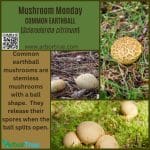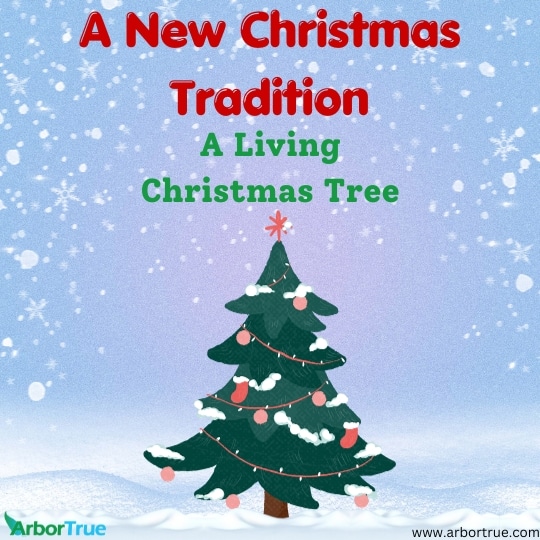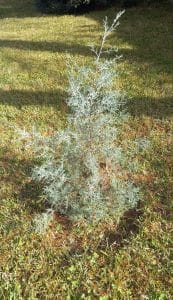
Why You Should Wait Before Planting In Wet Soil
November 29, 2023
Monday Mushroom: The Common Earthball (Scleroderma citrinum)
December 4, 2023

A New Christmas Tradition: A Living Christmas Tree
If you have a tradition of having a Christmas tree, you may be wondering if you should get a fresh cut tree or an artificial one?
While fresh cut trees such as blue spruce, Virginia pine, and firs can be beautiful, and artificial trees do have a lasting quality, have you considered a living Christmas tree?
A living Christmas tree is a living tree – something that is growing and hasn’t been cut. You can start with it in a pot indoors during Christmas and then plant it outside after the season after you transition it to the outdoors.
Transitioning a tree outdoors is a gradual process that generally involves slowly increasing the time the tree is outdoors over a number of days. You might start with placing the potted tree in a sheltered area and then slowly acclimating it to the conditions where it will be planted as you increase the time it is outside. Keep in mind that the watering needs of the potted tree might change depending on conditions and it might need more or less water than it did when indoors. You can check the soil in the pot to help determine if the tree needs more or less water.
A living Christmas tree has a number of wonderful qualities.
- It’s alive – that can help you celebrate the season.
- You can plant it some time after Christmas.
- A living tree can have sentimental value.
- You can decorate it for Christmas in the future in your landscape after you plant it.
If you’re considering getting a living Christmas tree, there are a number of things to keep in mind. Your growing zone, your rainfall amount, your soil type, and other factors are all important. A lot will depend on individual circumstances. Also, having a tree with the classical Christmas tree shape could be important to you..
If you live in certain areas, you might be able to plant a tree that is also sold as fresh cut. These include various pines, firs, and spruces. These are wonderful trees and can have a classic Christmas tree appearance.
If you live in a place like southeast Texas, there are alternatives you can consider. Some trees you might want to look at are the Arizona Cypress, the Spartan Juniper, Arborvitae, and Leyland Cypress. Although not a tree, rosemary can also be an alternative.
A great option for southeast Texas and similar places is the Arizona Cypress (Cupressus arizonica). It’s a beautiful tree that can have the classic Christmas tree shape. It’s a conifer and an evergreen and can look good in the landscape year round. It has lower water needs once established and can grow in places that are dry and hot. It does best in soil that drains well and in the sun. It can grow well without added fertilizer but it can be affected by disease and pests. It grows slowly, but can get tall if unpruned. It’s a great choice for the right conditions.
Here’s an example of a young Arizona Cypress tree growing in the southeast Texas area:

If you do get a living Christmas tree there are a few things to keep in mind.
- Set realistic expectations. A number of factors can negatively impact a tree over time. For example, spider mites can negatively impact a tree and can do so quickly. Although the tree you have could last a number of years with the right care, it also might not depending on circumstances.
- The shape can change. While you might start with a Christmas-tree-shaped tree, this can be hard to maintain. Pruning and trimming a tree to have a conical shape can be difficult and, since symmetry is important, if something happens like losing a branch, the shape can be lost.
- Consider planting in an irregular pattern. If you start a tradition of having a new living Christmas tree each year, you might consider planting them in an irregular pattern. As their sizes will differ this can help with the overall look. Also, if something happens to one tree, this can be less noticeable in an irregular pattern.
Although fresh cut trees and artificial trees have their merits, there is something to be said for a living Christmas tree. Under the right conditions, it can be a beautiful and sentimental addition to your landscape.



